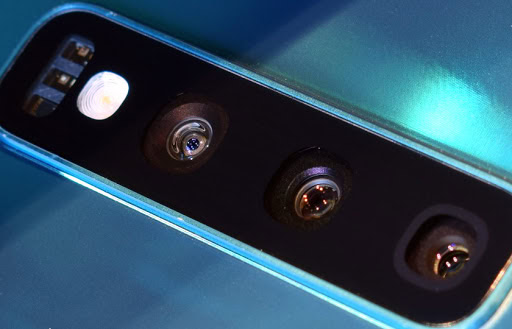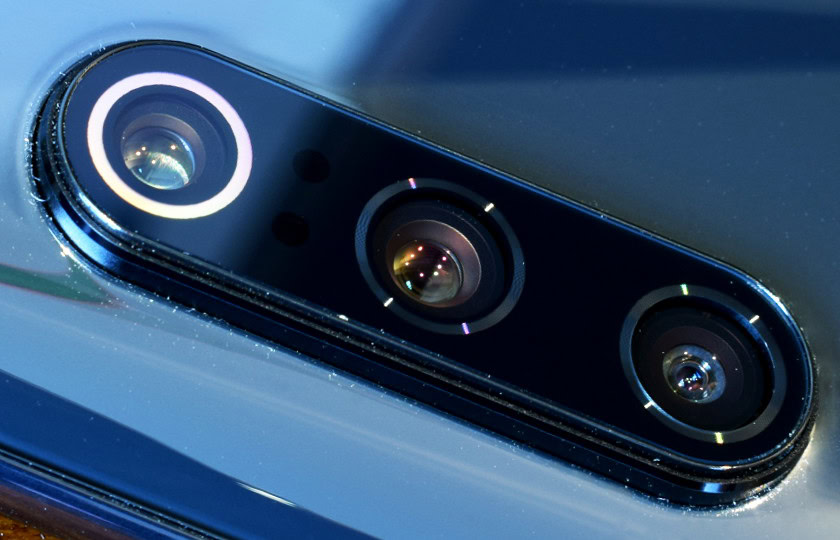Affiliate links on Android Authority may earn us a commission. Learn more.
Qualcomm ISP Explained
Published onJune 18, 2019

Taking the perfect picture relies on the combination of a great eye and the right hardware in your hand. You can check out our tips on how to improve your smartphone photography skills for the former. For the latter, the best camera is the one you have with you, and for most of us, that’s our smartphone.
In recognition of Qualcomm Technologies’ ongoing #ShotOnSnapdragon photo competition, we’ve decided to take a closer look at how premium platforms like the Qualcomm(R) Snapdragon(™) 855 Mobile Platform improve the capabilities of your smartphone’s photography. Our first dive into smartphone camera hardware focuses on the important role of the Image Signal Processor(ISP).
How smartphones process photographs
Taking the light from your camera sensor and transforming that into a beautiful looking picture is a complicated process involving a worryingly large amount of math and processing. Fortunately, digital cameras and smartphones handle this in an energy efficient way through the use of a dedicated ISP. Qualcomm Technologies integrates this hardware right into its platforms, such as the cutting-edge Qualcomm Spectra(™) 380 ISP inside the Snapdragon 855. This is a dedicated processing unit specific for photography and video that sits right alongside the CPU and other processing components.
So about that math. An ISP is built to handle a number of essential photography and video recording tasks. For starters, the ISP inside your phone runs the autofocusing algorithm that keeps your pictures sharp and in focus. In Qualcomm Technologies’ case, its Qualcomm Spectra ISP supports fancy dual phase sensors for lightning fast focusing. The Qualcomm Spectra ISP also monitors and adjusts color and white balance as well as exposure in real-time so that your pictures don’t come out too dark or too bright. All of that’s before you even hit the shutter button.
Qualcomm Spectra ISP monitors and adjusts color and white balance as well as exposure in real-time
Once you press the shutter, the ISP takes the red, green, and blue layer filtered camera sensor pixels and calculates a full resolution colored image from them. This is done through a process called Demosaicing. There are a number of different Demosaicing algorithms, some fancier than others, that can be used, but they all end up coloring each pixel a full shade of color that’s very close to how your eye sees.
Once the ISP has this RAW image data it can clean up the picture to improve its quality. Algorithms can be run at this stage to correct for the camera’s lens shading or curvature distortion. High Dynamic Range (HDR) and noise reduction calculation can also be run to improve image quality before finally encoding the large RAW data into a smaller JPEG image format for us to view and share online.
The more megapixels the phone camera has, the more processing required for each of these steps.
The more megapixels the phone camera has, the more processing required for each of these steps. The Qualcomm Spectra 380 ISP is engineered to support all of these features on a sensor up to 48 megapixels in size. Alternatively, the Qualcomm Spectra ISP also supports this on two 22MP cameras at once, so you can use a second camera at the same time to capture depth information for a fancy bokeh blur or take an image using the front and rear camera simultaneously.

What makes the Qualcomm Spectra ISP special?
With a general overview of ISP capabilities out of the way, let’s hone in on what makes the Qualcomm Spectra ISP so powerful. Qualcomm Technologies packs its Qualcomm Spectra ISP with its in-house technologies and algorithms for a selection of common tasks. These include noise reduction for clean looking images, Hybrid Autofocus, and no shutter lag when taking your snaps.
Zero Shutter Lag
Pressing the shutter and waiting even half a second for the picture to take can be the difference between the perfect action shot and a blurry mess. Qualcomm Technologies’ zero shutter lag ensures no lag when pressing the shutter button by constantly taking pictures while the camera app is open.
This operates at 30fps and stores a buffer of images in memory while you’re busy pointing your camera at your subject. When you hit the shutter, the desired frame is pulled from the buffer instantly and passed along to the ISP for processing. A constant stream of images can be used for other important image processing techniques, including HDR and Multi-frame Noise Reduction. Although the primary use is to ensure that you never miss the perfect shot when hitting the shutter.
Multi-frame Noise Reduction
The name gives away how this one works. Rather than using just a single image for its denoise algorithm, the Qualcomm Spectra ISP uses data from multiple frames to help improve the quality of your images even further.
By definition, noise is a random variation over time. However, the real details of your photography subject should be the same in each picture. By taking multiple pictures in very quick succession, it’s possible to identify which pixels are changing a lot due to noise and by how much. This gives the Qualcomm Spectra ISP a much better idea about how much or little denoise is needed to improve the image quality and is highly adaptable to the environment that you’re shooting in. Perfect for when you’re shooting in low light conditions where noisy pictures can be a problem.
Hybrid Autofocus
In addition to vanilla contrast autofocus, Qualcomm Technologies supports Phase Detection Auto Focus (PDAF) sensors with its Qualcomm Spectra ISP. This works by using phase differences in light to get a better grasp on the distances of objects in the scene, which helps to focus faster and more accurately. In addition, Qualcomm Technologies also supports laser autofocus technologies for accurate focusing even in very low light.
Hybrid focus combines these technologies with in-house algorithms that make the most of them. The Qualcomm Spectra ISP can switch between all of these on the fly or even use multiple technologies at once to ensure perfect focus in your shots. With the Qualcomm Spectra ISP, your phone is ready to quickly focus on fast-moving action, macro shots, and even in the dark.
Helping you take better photos
We don’t often talk about the ISP when discussing smartphone photography, but they’re clearly important pieces of kit that help improve the quality of your photos. We’ve only just scratched the services of what the Qualcomm Spectra ISP and broader photography ecosystem can achieve. There’s much more going on once we combine other processing capabilities and the power of computation photography.
The Qualcomm Spectra ISP can switch between all of these on the fly or even use multiple technologies at once
Of course, a great ISP is only part of the picture. If you want to take excellent snaps, be sure to check out our expert tips on how to take the perfect picture. And don’t forget to submit your entries to the #ShotOnSnapdragon photo competition for your chance to win a Snapdragon 855-powered smartphone.
Next: Win a Samsung Galaxy S10 powered by Qualcomm® Snapdragon™ Mobile Platform (U.S. only)
Content sponsored by Qualcomm Technologies, Inc.
Qualcomm Snapdragon and Qualcomm Spectra are products of Qualcomm Technologies, Inc. and/or its subsidiaries.